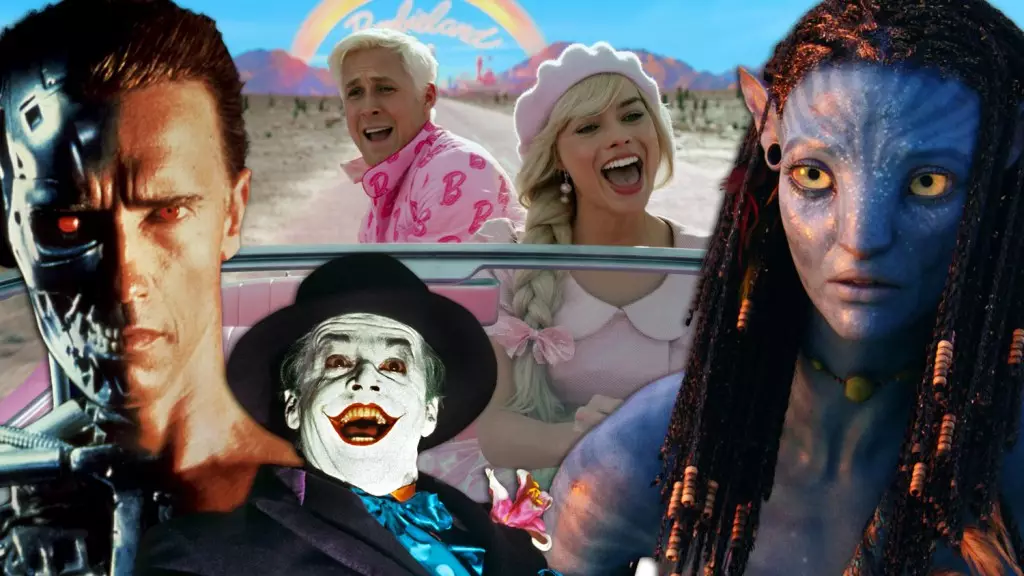The film industry has continually evolved since the late 20th century, with box office figures often reflecting broader cultural and technological changes. Notably, the North American box office has seen significant shifts in what constitutes a “hit” film—from the simplistic storytelling and star-led features of the past to today’s complex, franchise-driven narratives. A recent exploration of box office data from 1977 onward indicates a clear trend toward blockbuster productions, particularly those involving superheroes, animated tales, and established franchises such as Star Wars and Harry Potter.
The undeniable kingpin of the current box office landscape is the superhero genre. With the release of many films under the Marvel and DC banners, these movies have achieved phenomenal success, dominating annual box office rankings. For instance, 2023’s release from Warner Bros. grossed over $636 million, demonstrating that audiences are eager for epic narratives featuring caped crusaders battered by moral dilemmas and personal challenges. This genre often appeals to a broad demographic, combining action, drama, and humor in a way that resonates with both younger audiences and adults drawn to nostalgia or the intricacies of the storytelling.
Marvel’s shared cinematic universe has particularly set the stage for this phenomenon, showing that viewers are not just interested in one film but a sprawling universe that keeps them coming back for more. Box office successes are no longer isolated incidents; they represent a concerted effort to engage audiences across multiple films. This formula has caused many studios to emulate the model, leading to a saturation of superhero content.
Alongside superheroes, animated films have carved out a significant niche, often achieving impressive box office success. The latest Disney-Pixar entry, “Inside Out 2,” for example, grossed nearly $653 million shortly after its release. The appeal of animated films lies not only in their child-friendly themes but also in their ability to tackle sophisticated emotional narratives that resonate with adult audiences. The combination of well-crafted stories and stunning visuals makes them appealing for family viewing, thereby maximizing their box office potential.
Animation also provides a unique platform for exploring broader societal themes. Films like “Coco” and “Zootopia” have subtly addressed complex issues such as family dynamics and social justice, while enchanting viewers of all ages. The success of these films is indicative of a cultural shift that values storytelling as much as entertainment; viewers seek narratives that evoke emotion and provoke thought, a trend that animation deftly fulfills.
In addition to animated and superhero films, returning franchises like Harry Potter and Star Wars have cultivated devoted fanbases that ensure box office success. The nostalgia surrounding these franchises fosters an emotional connection with audiences, which studios leverage through sequels and spin-offs. The financial power of these franchises is substantial; films related to these iconic series often dominate box office sales and make significant contributions to the cultural landscape.
Moreover, the digital age has changed how franchises engage with fans. Online content, including trailers, behind-the-scenes features, and interactive social media campaigns, creates anticipation and buzz around upcoming releases. This marketing approach not only maximizes initial box office performance but can result in sustained financial success long after the opening weekend.
As we reflect on the evolution of the North American box office, it becomes clear that current trends highlight a response to audience demands for escapism through well-crafted narratives. While superhero films, animation, and successful franchises dominate the landscape, it remains uncertain how long this trend will last. The film industry continuously transforms, experimenting with new genres, storytelling methods, and technologies.
Looking ahead, there is hope for a diverse array of films to emerge as audiences express a desire for variety. While the super-saturated market of familiar franchises shows no signs of slowing, original storytelling remains a vital component of cinema that has the potential to surprise and engage viewers in new ways. The success of independent films and unique concepts indicates that the audience is hungry for both the familiar and the innovative—a balance that the film industry must strive to achieve in the coming years. Ultimately, the reciprocal relationship between cultural trends and box office performance will continue to shape the cinematic landscape, leading to the next wave of thrilling stories waiting to be told.


Leave a Reply